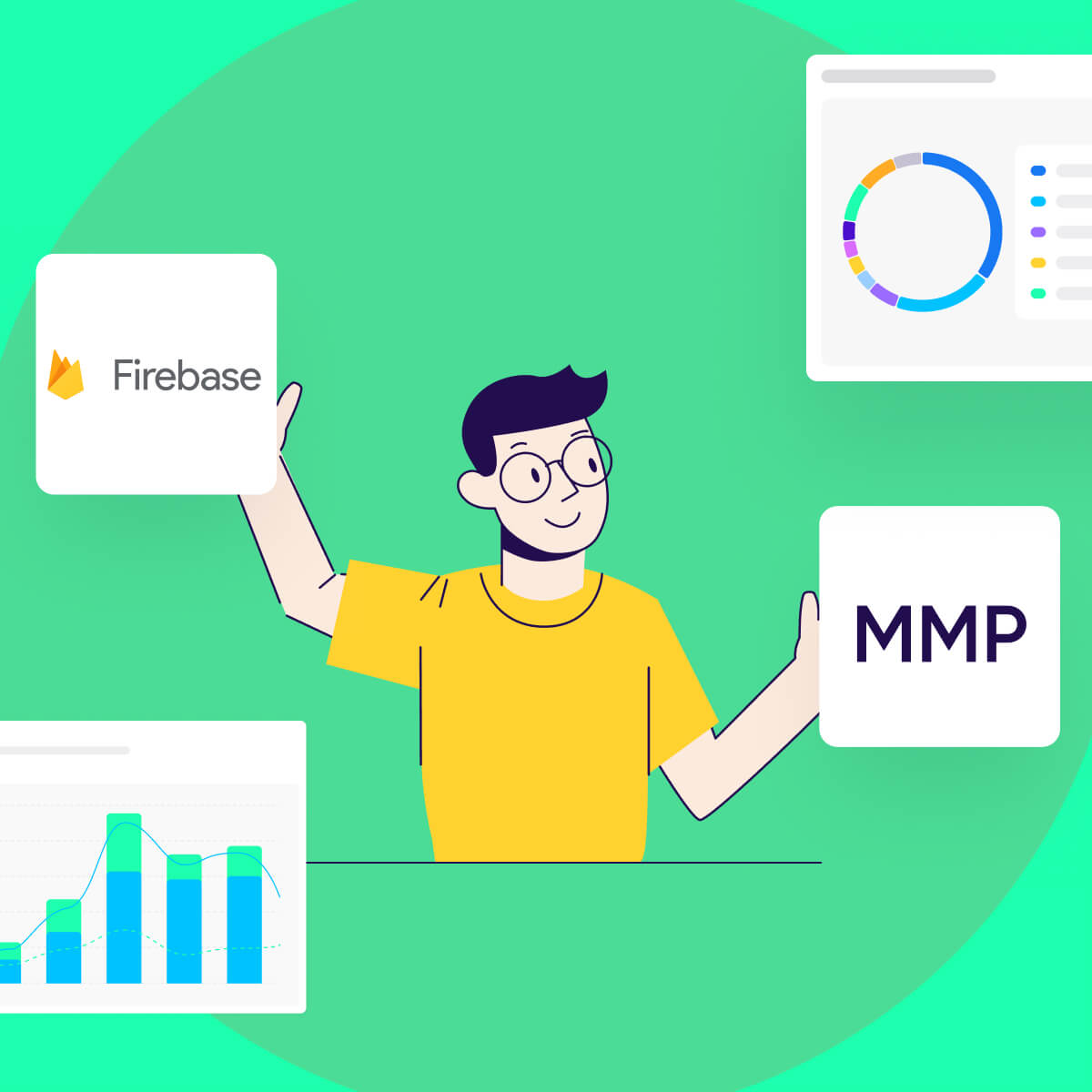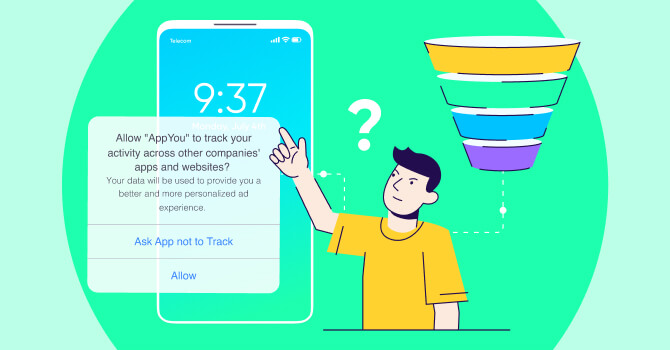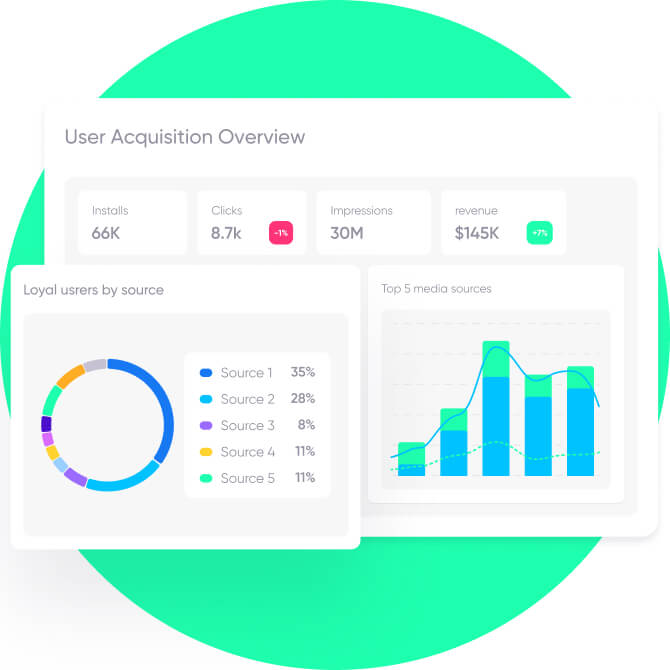
How to measure Google app campaigns in 2023: What you need to know

In January 2020, Google made the first privacy-forward move in announcing the industry’s race towards a cookieless future.
The phasing out of third-party cookies in Chrome (now deferred to 2023) was compounded by Apple’s rolling out of their App Tracking Transparency (ATT) policy, which requires all iOS apps to ask users for permission to track their data. Since then Google announced the planned deprecation of GAID by 2024 as part of the Android Privacy Sandbox.
The implications for targeting, measurement, and attribution have been significant for Google App Campaigns. In this article, we’ll explore the impact of ATT, why you should use an App Attribution Partner (AAP), Google’s denomination for the more-commonly used MMP term, and how you can implement an MMP to better measure your app campaigns today.
This blog is the second in a series on measurement of app campaigns in the top platforms – read the first one about Meta.
The seismic impact of ATT
As mentioned previously, Apple’s ATT policy requires developers to ask users to opt-in for data tracking. As a result, Google told advertisers to expect three major changes:
First, Google informed advertisers to expect fluctuations in campaign volume, particularly a decrease in reach.
Second, Google suggested developers implement Apple’s new framework to verify installs from ad networks aka the SKAdnetwork API. Further, Google suggested advertisers also utilize Firebase, which registers apps for SKAdNetwork attribution and “focuses on measuring first open conversions for consented users.”
Lastly, Google expanded the use of modeled conversions, which uses their proprietary data to estimate conversions that Google is unable to measure and identify directly. More on this later.

So how do you measure app campaigns today?
On iOS, moving away from IDFA forced Google to shift to more “data-driven” predictive modeling. To make things more complicated for advertisers, starting with iOS14, Google did not provide an opt-in prompt for users in their owned and operated apps like YouTube and Gmail, leaving no room for user-level attribution.
As mentioned previously, Google rolled out modeled conversions to preserve campaign reporting and optimizations. Google is a self-reporting network (SRN), but modeled conversions are not claimed under this framework due to privacy reasons, which means modeled conversions cannot be independently verified by MMPs and attributed against other media sources. Furthemore, Google does not get data on conversions or installs from MMPs.
In the context of iOS restrictions, Google further promoted Google Analytics for Firebase for reporting and optimization inclusive of modeling signals. While Firebase is essentially a tool that helps app developers build and grow apps, it is primarily designed for Google.
As a result, it is best used alongside an MMP which can provide a far more comprehensive picture of attribution across channels beyond Google (Firebase doesn’t have integrations with most of the top networks, making attribution of installs, and consequently of in-apps, via Firebase impossible).
Lastly, the majority of the Android ecosystem remains open to deterministic attribution with device IDs available where consented, which means that MMP attribution retains its full scope on the platform (as mentioned, GAID deprecation is only expected in 2024, and Google has committed to working with app developers on finding suitable alternatives beforehand).

How are modeled conversions measured?
Google explains how they calculate modeled conversions when there are no unique identifiers to measure ad interactions in the following steps:
- Ad interactions are separated by whether or not they can be linked to an ad with a conversion or not.
- Google measures the conversion rates of similarly behaving users based on factors such as time of day, device type, and operating system.
- Google applies a machine learning model that predicts the likelihood of conversions for all users that interacted with the ad. The learnings are applied to each advertiser.
- The models are validated by Google’s calibration signals including historical conversion trends.
While certain providers might report modeled conversions in aggregate in a dedicated column, the proprietary modeling nature of this framework means that no 3rd party validation of modeled conversion can be performed for the purpose of attribution.
As such, any reporting inclusive of modeled conversions must be interpreted in the context of Google advertising only.
Why measure Google with an MMP?
Google Ads reporting is inherently only able to see and report Google conversions, which may have touchpoints from ads running on multiple ad platforms that contribute to the funnel.
An MMP will perform as a source of truth, delivering unbiased attribution by deduplicating conversions across networks. Even in the case of inherently partial attribution data on iOS (due to Google not prompting users of opt-in, for instance), such attribution signals can be used as a baseline to model overall performance across channels.
Advertising on at least two different platforms is enough of a justification to use an MMP. However, even if an advertiser runs campaigns exclusively on Google, an MMP can provide crucial campaign insights such as audience management, incrementality, fraud detection, and user engagement.
With their connections to thousands of media partners, MMPs can demonstrate the true value of an entire program.
In short, MMPs are the best way to accurately measure Google Ads when multiple networks and media sources are in use.

How to pick the right MMP for you
There are three key factors you need to look for in an MMP in order to be successful when advertising on Google.
First, an MMP must be privacy-forward, and needs to ensure that your integration is future-proof by having proactive privacy measures in place.
MMPs offer enhanced functionality beyond attribution, including cost analysis, audience segmentation, deep linking, fraud detection, and predictive analytics.
Lastly, it’s essential to ensure your MMP is unbiased and independent of the business interests of any specific ad network.
How does MMP measurement complement Google measurement options?
Advertisers can use Google’s measurement solutions like Firebase. There is no conflict in using both Firebase together with an MMP, and it can potentially be beneficial for Google Ads campaign optimization due to unique Firebase functionality around signal collection for bidding and audience building.
However, there will be inherent reporting discrepancies between MMP and Google reporting, due to multiple factors such as multi-touch attribution and measurement restrictions stemming from Google decisions around iOS14, as well as modeled conversions not being claimed by Google.
These discrepancies are a feature, not a bug, and the combination of native Google functionality with MMP attribution can help form the most accurate picture of performance for advertisers.
How do I migrate my attribution business to an MMP?
MMPs are all integrated with Google, which makes it incredibly easy to set up. Here are the three key steps to the process:
- Developers generate a Google Ads Link ID
- Connect Google Ads on AppsFlyer
- Advertisers map desired standard or custom Google events to MMP events
- Event data is recorded and sent to the MMP for attribution and optimization. Once set up, you can map events and get attribution data right away for all active campaigns.




